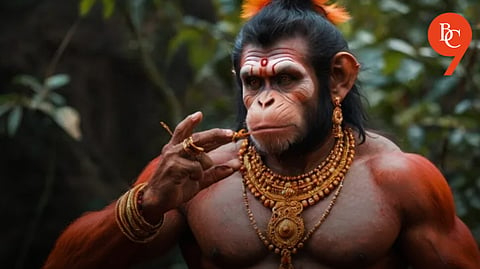

According to Hindu legend, the practice of smearing sindoor on Hanuman’s idol traces back to a simple yet profound incident in the Ramayana era. One day, Hanuman noticed Sita, Lord Rama’s consort, applying sindoor (vermilion) to the parting of her hair. Curious, Hanuman asked Sita why she did this daily.
Sita lovingly explained, “This sindoor is a symbol of my love and prayer for Lord Rama’s long life. The more sindoor I apply, the longer and happier Rama’s life will be.” Hanuman, ever the devoted servant, was deeply moved. Thinking that if a small amount of sindoor could ensure Rama’s well-being, then covering his entire body in sindoor would surely grant Rama even greater longevity and happiness.
Without hesitation, Hanuman smeared his whole body with sindoor, turning himself bright red. When Lord Rama saw Hanuman in this vivid form, he was astonished and asked the reason. Hanuman humbly replied that he wanted Rama to have the longest life possible, so he covered himself in sindoor as an act of ultimate devotion.
Lord Rama was deeply touched by Hanuman’s pure-hearted gesture. Impressed by this selfless act, he blessed Hanuman, declaring that anyone who worships Hanuman with sindoor would be freed from their troubles and receive special blessings. This is why, to this day, devotees offer sindoor to Hanuman idols in temples across India.
Sindoor, in this context, is much more than a ritual pigment. For Hanuman, it symbolizes:
Absolute devotion and surrender to Lord Rama
The willingness to go to any length for the well-being of the beloved
The dissolution of ego and the merging of one’s identity in service
The red color also represents shakti (divine energy), prema (boundless love), and tapasya (spiritual austerity), making Hanuman’s sindoor a living symbol of bhakti (devotion)
In many temples, especially in North India, Hanuman’s idol is bathed in bright red sindoor mixed with oil. Devotees believe that offering sindoor to Hanuman brings protection, strength, and the removal of obstacles in life. The tradition is not just a ritual, but a living reminder of Hanuman’s unwavering love and the ideal of selfless service.
